- Home
- Tom Clancy
Airborne: A Guided Tour of an Airborne Task Force Page 23
Airborne: A Guided Tour of an Airborne Task Force Read online
Page 23
2. Heading from IP to targets.
3. Elevation of targets.
4. Distance from IP to the targets.
5. Target descriptions (artillery positions, tank columns, truck convoys, etc.).
6. Map coordinates of the targets.
7. Positions of nearby friendly forces.
8. Best direction to leave the target area.
9. Any other information that might help the pilot survive.
By formalizing the process of target designation and properly coordinating run-ins, the chances of a “blue-on-blue” or “friendly fire” incident are minimized.
These tactics did not develop overnight. On the contrary, from the time the 23rd Fighter Wing (the first overseas A-10 unit) stood up at RAF Bentwaters in the late 1970s, they were constantly refining their craft, always working to find new ways to better use their Hogs.
Throughout the 1980s, A-10 units were frequently deployed to trouble areas like Korea and the Caribbean, but always after the tensions were over. They helped hold the line during the final decade of the Cold War, and were almost out of business when a call to go to a real war arrived.
August of 1990 saw the Iraqi invasion of Kuwait, and the A-10 community were quickly up to their snouts in the crisis. One quick note about this, though. There has always been an apocryphal story that General Chuck Horner, the commander of the U.S. 9th Air Force and the Central Command Air Forces (CENTAF), did not want the Warthogs in the Persian Gulf. Nothing could be further from the truth, though.35 Deployment of A-10 units had always been part of the 9th Air Force/CENTAF deployment schedule, and they got their alert order to move only six days after the first USAF units had started deploying to the Gulf. As General Horner would tell you, he had to get aircraft capable of getting air superiority into the theater first, and the Warthogs just had to wait their turn.
This does not mean that everything was easy when they got there. The deployment to Saudi Arabia took almost twice as long as a comparable F-15 or F-16 unit because of the Warthogs’ slow cruising speed, and when they arrived, the conditions they encountered were decidedly austere. Living in tent cities with outdoor showers was the rule for the A-10 units. But like the other units assigned to CENTAF, they worked hard and made their main base at King Fahd International Airport (near Dhahran) a suitable home.
The real problem the Warthog community had was selling themselves and their capabilities to the CENTAF planning staff. The bulk of the early Desert Storm air campaign targets were of a “strategic” type, requiring the kind of all-weather targeting and precision-guided munitions capabilities that were inherent to aircraft like the F-111F Aardvark, F-117 Nighthawk, and A-6E Intruder.36 On the surface, this would appear to leave little for other attack aircraft like the A-10s, F-16s, and AV-8B Harriers to do, though nothing could be further from the truth. From the very beginning of the Desert Storm air campaign planning process, it had been planned to keep a constant, twenty-four-hour-a-day pressure on the Iraqis, especially their fielded forces in the Kuwaiti Theater of Operations (KTO). When the advocates for the A-10 made their capabilities known to the CENTAF staff, the Warthogs quickly began to get mission tasking for operations in southern Iraq and Kuwait.
By the time Desert Shield turned into Desert Storm, a total of 144 A-10s had been deployed to Saudi Arabia, forming the 23rd and 354th Tactical Fighter Wings (Provisional). Despite the terrible weather and difficult operational conditions in the Gulf during the winter of 1991, overall A-10 mission availability during the Gulf War was rated at 95 percent, which was higher than peacetime levels at well-equipped home bases!
However, this was war and a price was paid when four A-10s were downed by enemy ground fire. Captain Stephen R. Phillis of the 354th TFW (P) was killed by a surface-to-air missile while escorting his battle-damaged wingman out of a target area in northern Kuwait on February 15th, 1991. For his actions, he was posthumously awarded the Silver Star. Two other battle-damaged A-10s were destroyed while attempting to land, and two other damaged aircraft were written off after they returned home (both became “gate guards” on static display at their Stateside home bases).
While operations in the air were dangerous for the A-10s, there also were problems on the ground. One of the realities of modern CAS operations is that they sometimes happen really close to friendly forces. Desert Storm was no exception, and there were several “friendly fire” incidents as a result. The first occurred during the Battle of Khafji, when an A-10 accidentally fired an AGM-65 IIR Maverick missile into the back of a USMC light armored vehicle. Seven Marines were killed, and another pair badly wounded. Later, in one of the most tragic incidents of the war, on February 25th, 1991, nine British troops died in a Warrior infantry combat vehicle struck by another Maverick mistakenly fired by an A-10. These were hardly the only “blue-on-blue” incidents to take place during Desert Storm, just the worst. In both cases there were questions about the Maverick missiles possibly going “stupid” (i.e., their seeker heads breaking lock on their intended targets) and going after the first target that came into view of the Maverick’s IIR seeker head.
On the plus side, A-10s flew 8,755 sorties, scoring confirmed kills on 1,106 trucks, 987 tanks, 926 artillery pieces, 501 armored personnel carriers, 249 command vehicles, 51 SCUD missile launchers, 96 Iraqi radars, SAM sites, and 10 parked aircraft, plus the 2 air-to-air kills against helicopters. The actual damage inflicted by the Warthogs was probably greater, because the rules for “confirmed” kills were very strict, but interpretation of the results is controversial since the Iraqis also made extensive use of decoy targets. A-10s delivered a large percentage of the total tonnage of ordnance delivered during the war, with a total of 5,013 AGM-65 Mavericks being launched, 14,184 500-lb/227-kg bombs dropped, and 940,254 30mm GAU-8 rounds fired. In the early days of the air campaign, A-10s often carried a pair of AIM-9M Sidewinder AAMs on the outermost weapon stations, but as the Iraqi air threat dissipated, these were usually left on the ground. A few were fired inadvertently, but no hits were scored.
Shooting wars always seem to bring out the ingenuity in Americans, and Desert Storm was no exception. No operational plan lasts beyond the first battle, and the A-10 squadrons had to improvise a variety of new tactics for the desert war. To avoid the heaviest Iraqi ground fire, they were ordered by the CENTAF staff to operate at medium altitudes (around 8,000 feet/2,438 meters) rather than the extremely low levels they had trained for.
More interestingly, several squadrons operated primarily as night intruders, using parachute flares and the IIR seeker heads of their AGM-65 Maverick missiles to pick out targets. With a field of view limited to only 3° and a fuzzy cockpit display screen, using the Maverick as a night sight was “like looking through a soda straw.” Nevertheless, it was an excellent alternative to a million-dollar stabilized FLIR system, which the A-10 was never going to get anyway. It was just another example of the Warthog spirit that you find in the men and women who operate this most ugly and functional of warplanes.
CAS missions were not the only important tasks given to the A-10. Certainly the most satisfying was the “Sandy” mission, which had Warthogs escorting combat search and rescue (CSAR) helicopters to pick up downed aircrews and other personnel behind enemy lines. On one such CSAR mission, a pair of Hog drivers, Captains Paul Johnson and Randy Goff, won an Air Force Cross and Distinguished Flying Cross respectively for their efforts. While supporting an MH-53J Pave Low III special operations helicopter which was picking up the radar intercept officer of a downed Navy F-14 Tomcat, they made numerous runs on Iraqi ground troops trying to capture the Airedale. Despite severe opposition, the two Hogs kept the Iraqis at bay long enough to get the Naval aviator out of harm’s way and on the way home.
Some of the other missions that Warthogs flew during the war were even more unusual. Because of their slow speed and long loiter time on station, the A-10s proved to be superb in the role of hunting down the launchers of the notorious SCUD surface-to-surface missiles that were
such a thorn in the side of the Allied war effort. However, of these various peripheral missions being flown by the Hog, none was more important than of FAC.
For the CAS mission, you need FACs, either in the air or on the ground, to direct aircraft in to deliver their ordnance on target. In the years leading up to Desert Storm, the USAF had severely drawn down their force of FAC aircraft, and a new airframe was needed to replace the aging force of Vietnam-era “bird dogs.” Out of this requirement came the only significant Warthog variant, the OA-10A. The OA-10 is almost identical to the standard A-10 (except for the radio systems), but has a different mission and carries a different mix of weapons.
During Desert Storm, several Warthog squadrons operated OA-10s as forward observers and provided FAC services to the flyers of almost every service and nation fighting in the Coalition. The OA-10 pilots loitered over the battlefield to detect enemy forces, and directed other aircraft to attack them. The OA-10 drivers frequently relied on hand-held binoculars and instinct, and they often fired unguided white phosphorus rockets (which produce dense white smoke) to mark targets. Operating over the CENTAF-MANDATED “kill boxes” in Kuwait and Iraq, they controlled incoming flights of aircraft from every nation. Everything from USAF F-16s to French Mirages were guided onto their targets by the OA-10s, and they were a vital part of the 24-hour-a-day pressure that helped crack the Iraqi Army.
By the coming of the ground war, the Warthog force had done the bulk of the work that they would accomplish. Misunderstandings over the Fire Control Support Line (FCSL, a hypothetical line in front of friendly ground troops beyond which CAS and other aircraft must deliver their ordnance) as well as poor weather limited CAS operations during the so-called “Hundred-Hour War.” Nevertheless, the Hogs and their crews had an outstanding war, carving out a place in the post-Cold War military just as important as the stealthy F-117s and the laser-bombing F-15E Strike Eagles. Since that time, Warthogs have been highly active around the world, from supporting “no-fly” and relief operations in northern Iraq, to helping forge and protect the peace in Bosnia-Herzegovina. And the story is not over yet.
With the coming of the “New World Order,” national and USAF leaders have found a secure little niche in the USAF force structure for the Warthog community. Prior to Desert Storm, it had been planned that the A-10 would be replaced by a modified version of the F-16 Fighting Falcon. Equipped with an automated target-hand-off system and a pod-mounted version of the GAU-8, they were set to drive the “Hog” out of service in just a few years. Then came the 1991 Persian Gulf War. The USAF deployed a squadron of the CAS-equipped F-16s to Saudi Arabia, where they promptly fell flat on their collective faces.37 Reportedly because of software problems with their mission computers, the CAS F-16s had trouble delivering their weapons accurately on target. In particular, the pod-mounted 30mm guns could not hit their targets with any sort of accuracy. Meanwhile, the “low-tech” A-10s were killing targets by the score. As might be imagined, the F-16 CAS idea died a quick and righteous death, and the USAF decided to keep the Warthogs. Forever! Today, if you look at the planning charts of the USAF Air Staff at the Pentagon, you see a line depicting the life of the A-10 fleet going as far right (into the future) as the chart goes! While nothing is planned to replace the Hog, there also are no plans for it to retire, and perhaps this is as it should be.
Today, the A-10 is being allocated modest (though significant by Warthog standards!) funds to upgrade its operational capabilities. The rudimentary night intruder tactics employed by the Hogs during Desert Storm really impressed the USAF leadership, and they have finally decided to invest a little money in the bird to make it more capable in the role. Once upon a time, there had been plans to equip the Hog with the LANTIRN navigation /targeting pod system that currently is found in other high-end fighter bombers like the F-14D Tomcat, the F-15E Strike Eagle, and the F-16C Fighting Falcon. In fact, this would probably be an excellent idea, even today, given the flight characteristics of the Warthog. Unfortunately, the high cost of the LANTIRN system (several million U.S. dollars per pod sets) makes this impossible, and other means have been found to enhance the A-10’s night fighting capabilities.
The most important of these have been the use of night-vision goggles (NVGs) by A-10 pilots. By carefully modifying the cockpit lighting for NVG operations (so as not to “dazzle” the NVG’s sensitive pickup element), the Hog drivers can actually fly and fight the aircraft rather well in all but the darkest nights. While the field of view and depth of field suffer somewhat by comparison with regular eyesight (as a result of the monochrome world seen through the NVGs), it is an operable solution to giving the Warthog (and several other USAF aircraft) a night-vision capability that costs thousands, not millions, of taxpayer dollars. Exterior lighting has also been improved, and like most other Air Force birds, the A-10s have finally received GPS receivers.
Another big change for the A-10 has been LASTE, the Low Altitude Safety and Targeting Enhancement. This includes a radar altimeter and ground-proximity voice warning system, a new weapons delivery computer based on the one used in the F-16, and a real autopilot, allowing the pilot to take his hands off the controls for the first time. This is important because it makes it possible for Hog drivers to relax a bit on long overwater deployments. These relatively minor improvements have produced big results for the Warthog community, and have made the A-10’s twentieth year of front-line service more of a rebirth than a sunset. Whatever their future, though, never count the A-10 and their pilots and crews out. Remember, they have the heart and soul of a Warthog.
The Labors of Hercules: The Lockheed Martin C-130
In Greek mythology, Hercules was a hero of superhuman strength who proved his merit by performing a series of impossible tasks. That’s a good description for the C-130, an aircraft affectionately known as the “Herky Bird.” This amazing airplane celebrated its fortieth anniversary of continuous production in 1995, with over 2,200 aircraft delivered, in scores of variants operated by dozens of air forces and civilian airlines. Designed as a simple troop carrier and freight hauler, the C-130 has served as a flying command post, electronic spy plane, airborne hospital, drone mother ship, gun platform, firefighter, search-and-rescue bird, and even a bomber! Perhaps most impressive, though, is that while it was built to serve in war, some of its greatest achievements have been humanitarian relief operations. The C-130 has probably wound up saving far more lives in peace than it ever took in combat. So read on, and read what I can only humbly call an abbreviated and inadequate story about one of the great machines of man’s history on earth.
The C-130 story began in the early 1950s when medium transport aircraft technology seemed to have peaked with the development of the pistonengined Flying Boxcars. The military airlift fleet at the time consisted mostly of twin-engine aircraft of limited capacity: war-weary C-47s and under-powered C-119s. Clearly a higher-performance medium transport was needed to support the moving of cargo and personnel within military the-aters of operation. One of the colonels assigned to allocate the money for transport aircraft suggested that the Air Force really needed a rugged medium transport that could carry about fifteen tons to a range of 1,500 nm/2,780 km, operating from improvised dirt runways. Thus, the start of the C-130 program was an emergency $105 million supplement to the Air Force research and development budget, granted a few days after the outbreak of the Korean War in June 1950. The idea was formalized as an operational requirement in February of 1951, with the following features being desired:• The ability to carry ninety paratroopers for a range of 2,000 nm/3,706 km.
• The capacity to transport 30,000 pounds (13,636 kg) over a shorter distance.
• The ability to take off and land in short distances (2,500 feet/762 meters).
• The ability to fly safely and safely slow to 125 kt/232 kph for airdrops, and even less for assault landings.
Boeing, Douglas, Fairchild, and Lockheed submitted proposals, with Lockheed winning the contract to build two YC-130 protot
ypes on July 2nd, 1951. The aircraft was designed at Lockheed’s Advanced Design Department in Burbank, California, under the direction of Willis Hawkins, with Art Flock as the lead project engineer. When Kelly Johnson, Lockheed’s legendary chief designer and builder of some of the most beautiful airplanes in history, first saw the mockup, he thought the plane was too ugly and went back to his Skunk Works.38 Nevertheless, Lockheed was about to launch the longest-lived and most profitable aircraft in their history, making this one of Johnson’s rare misjudgments.
Kelly Johnson was right about one thing, though; the Hercules would never win any beauty contests. The lines of the stubby fuselage (97 feet 9 inches/29.8 meters in length) were spoiled by bulging landing gear fairings. The tail swept up sharply to an oversized vertical fin (30 feet/11.66 meters tall) and the spacious flight deck looked like a greenhouse, with no less than twenty-three windows to give outstanding visibility for the flight crew. The high-mounted wing was a barely tapered slab (spanning over 132 feet/40 meters) with four projecting engine pods, and was a conservative two-spar design with integral fuel tanks. However, in a daring departure from conventional manufacturing methods, the design called for enormous single-piece machined aluminum skin panels up to 48 feet/14.6 meters in length.

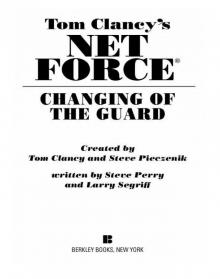 Changing of the Guard
Changing of the Guard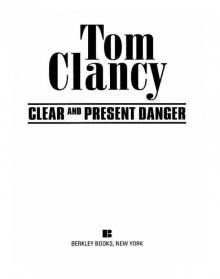 Clear and Present Danger
Clear and Present Danger Hounds of Rome
Hounds of Rome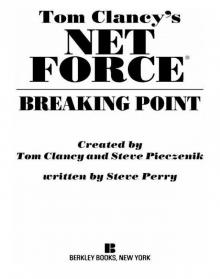 Breaking Point
Breaking Point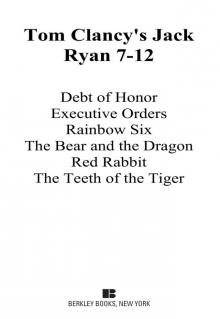 Tom Clancy's Jack Ryan Books 7-12
Tom Clancy's Jack Ryan Books 7-12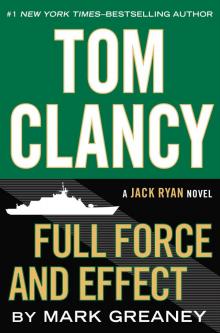 Full Force and Effect
Full Force and Effect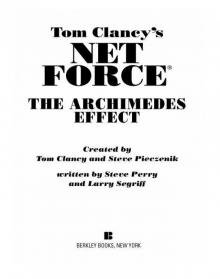 The Archimedes Effect
The Archimedes Effect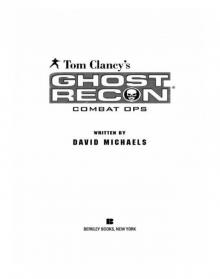 Combat Ops
Combat Ops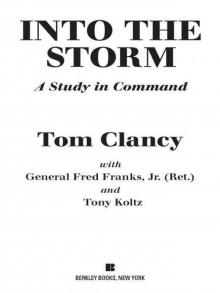 Into the Storm: On the Ground in Iraq
Into the Storm: On the Ground in Iraq Under Fire
Under Fire Point of Impact
Point of Impact Red Rabbit
Red Rabbit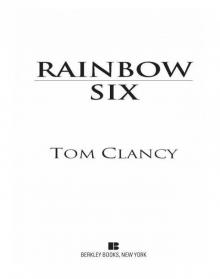 Rainbow Six
Rainbow Six The Hunt for Red October
The Hunt for Red October The Teeth of the Tiger
The Teeth of the Tiger Conviction (2009)
Conviction (2009)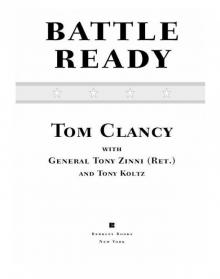 Battle Ready
Battle Ready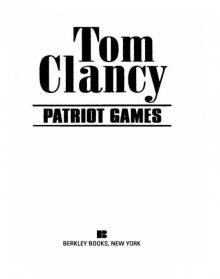 Patriot Games
Patriot Games The Sum of All Fears
The Sum of All Fears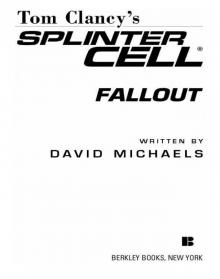 Fallout (2007)
Fallout (2007) Red Storm Rising
Red Storm Rising The Cardinal of the Kremlin
The Cardinal of the Kremlin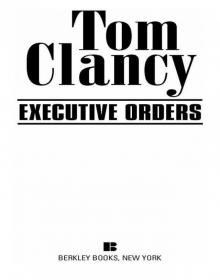 Executive Orders
Executive Orders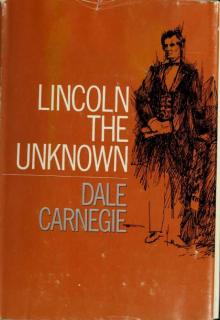 Lincoln, the unknown
Lincoln, the unknown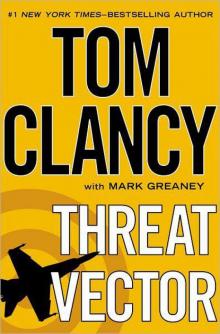 Threat Vector
Threat Vector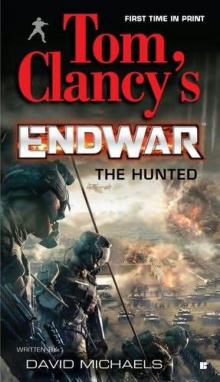 The Hunted
The Hunted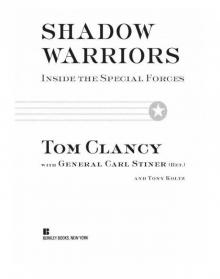 Shadow Warriors: Inside the Special Forces
Shadow Warriors: Inside the Special Forces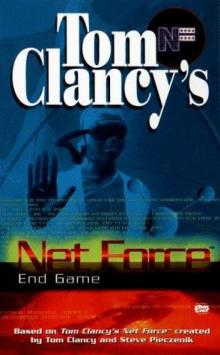 End Game
End Game Special Forces: A Guided Tour of U.S. Army Special Forces
Special Forces: A Guided Tour of U.S. Army Special Forces Locked On
Locked On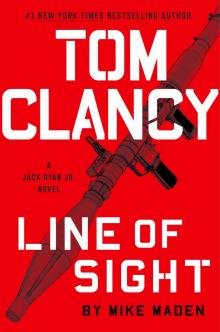 Line of Sight
Line of Sight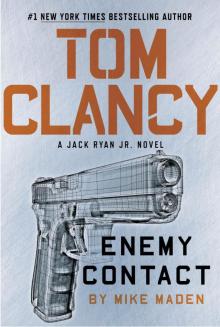 Tom Clancy Enemy Contact - Mike Maden
Tom Clancy Enemy Contact - Mike Maden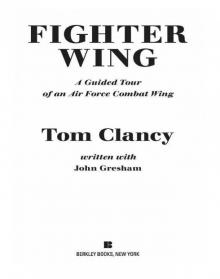 Fighter Wing: A Guided Tour of an Air Force Combat Wing
Fighter Wing: A Guided Tour of an Air Force Combat Wing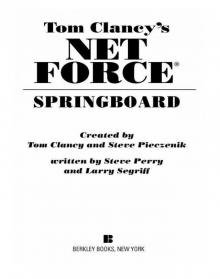 Springboard
Springboard Line of Sight - Mike Maden
Line of Sight - Mike Maden EndWar
EndWar Dead or Alive
Dead or Alive Tom Clancy Support and Defend
Tom Clancy Support and Defend Checkmate
Checkmate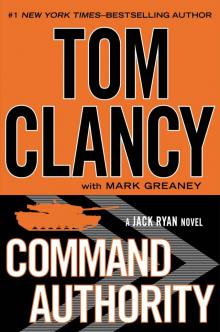 Command Authority
Command Authority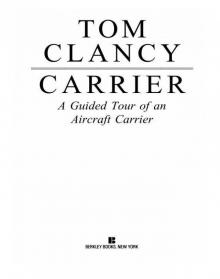 Carrier: A Guided Tour of an Aircraft Carrier
Carrier: A Guided Tour of an Aircraft Carrier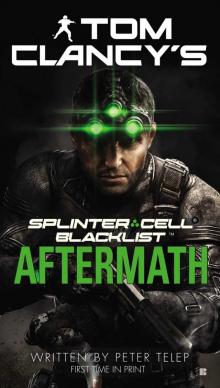 Blacklist Aftermath
Blacklist Aftermath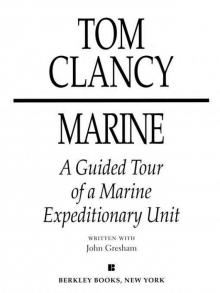 Marine: A Guided Tour of a Marine Expeditionary Unit
Marine: A Guided Tour of a Marine Expeditionary Unit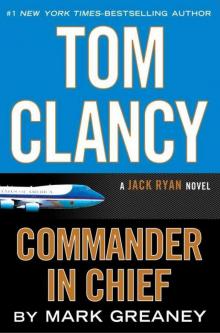 Commander-In-Chief
Commander-In-Chief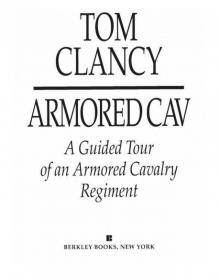 Armored Cav: A Guided Tour of an Armored Cavalry Regiment
Armored Cav: A Guided Tour of an Armored Cavalry Regiment Tom Clancy's Jack Ryan Books 1-6
Tom Clancy's Jack Ryan Books 1-6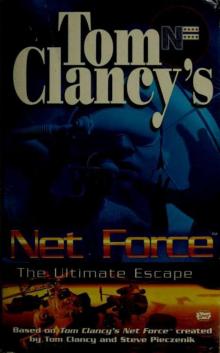 The Ultimate Escape
The Ultimate Escape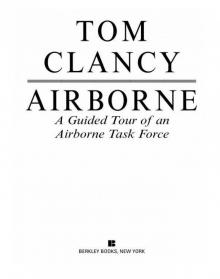 Airborne: A Guided Tour of an Airborne Task Force
Airborne: A Guided Tour of an Airborne Task Force Debt of Honor
Debt of Honor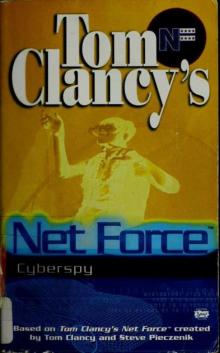 Cyberspy
Cyberspy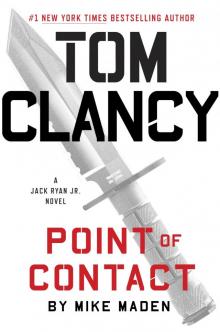 Point of Contact
Point of Contact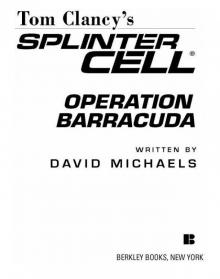 Operation Barracuda (2005)
Operation Barracuda (2005)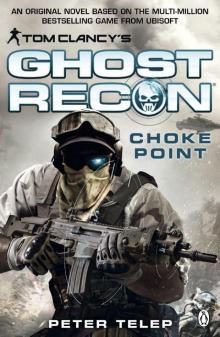 Choke Point
Choke Point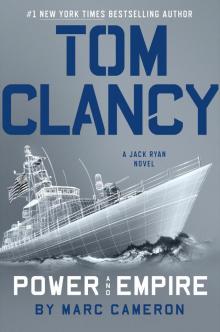 Power and Empire
Power and Empire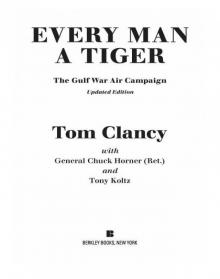 Every Man a Tiger: The Gulf War Air Campaign
Every Man a Tiger: The Gulf War Air Campaign Endgame (1998)
Endgame (1998)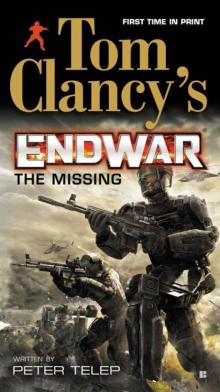 EndWar: The Missing
EndWar: The Missing Splinter Cell (2004)
Splinter Cell (2004) The Great Race
The Great Race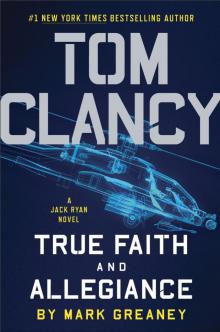 True Faith and Allegiance
True Faith and Allegiance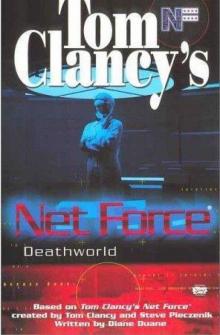 Deathworld
Deathworld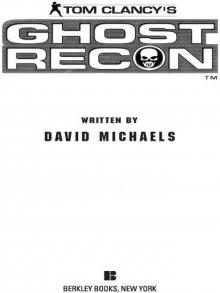 Ghost Recon (2008)
Ghost Recon (2008)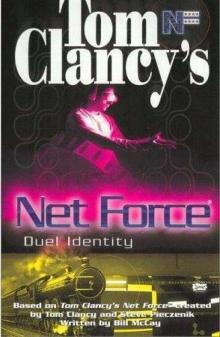 Duel Identity
Duel Identity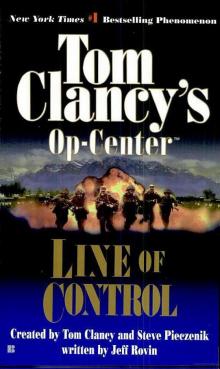 Line of Control o-8
Line of Control o-8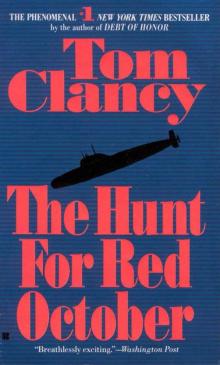 The Hunt for Red October jr-3
The Hunt for Red October jr-3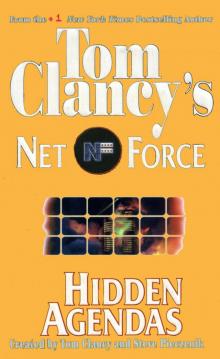 Hidden Agendas nf-2
Hidden Agendas nf-2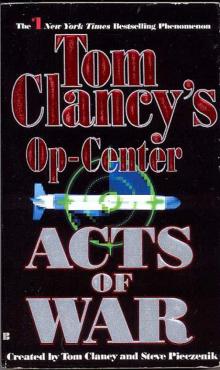 Acts of War oc-4
Acts of War oc-4 Ruthless.Com pp-2
Ruthless.Com pp-2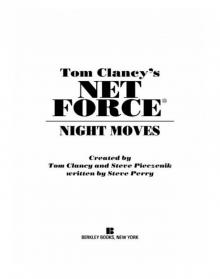 Night Moves
Night Moves The Hounds of Rome - Mystery of a Fugitive Priest
The Hounds of Rome - Mystery of a Fugitive Priest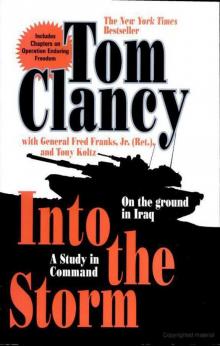 Into the Storm: On the Ground in Iraq sic-1
Into the Storm: On the Ground in Iraq sic-1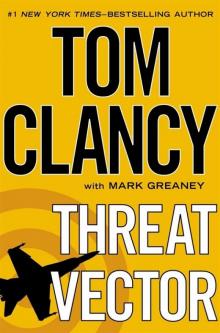 Threat Vector jrj-4
Threat Vector jrj-4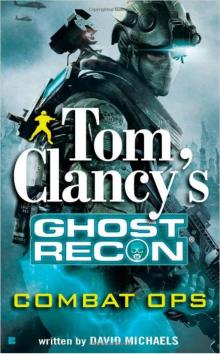 Combat Ops gr-2
Combat Ops gr-2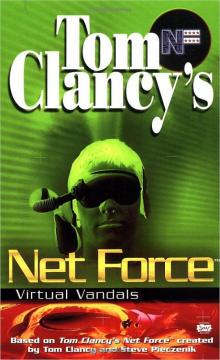 Virtual Vandals nfe-1
Virtual Vandals nfe-1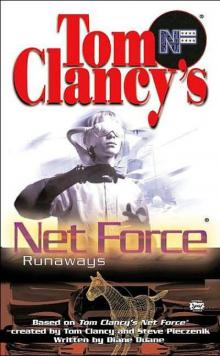 Runaways nfe-16
Runaways nfe-16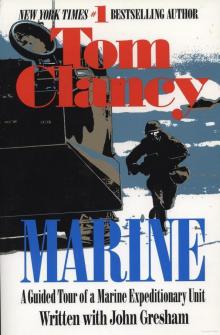 Marine: A Guided Tour of a Marine Expeditionary Unit tcml-4
Marine: A Guided Tour of a Marine Expeditionary Unit tcml-4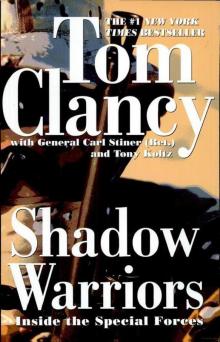 Shadow Warriors: Inside the Special Forces sic-3
Shadow Warriors: Inside the Special Forces sic-3 Jack Ryan Books 1-6
Jack Ryan Books 1-6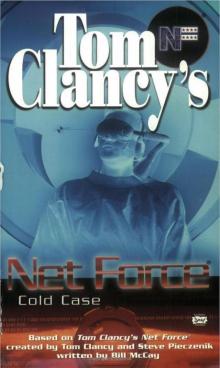 Cold Case nfe-15
Cold Case nfe-15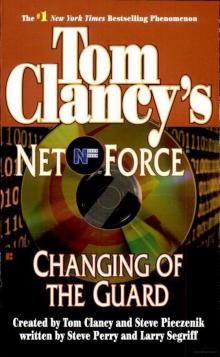 Changing of the Guard nf-8
Changing of the Guard nf-8 Splinter Cell sc-1
Splinter Cell sc-1 Battle Ready sic-4
Battle Ready sic-4 The Bear and the Dragon jrao-11
The Bear and the Dragon jrao-11 Fighter Wing: A Guided Tour of an Air Force Combat Wing tcml-3
Fighter Wing: A Guided Tour of an Air Force Combat Wing tcml-3 Patriot Games jr-1
Patriot Games jr-1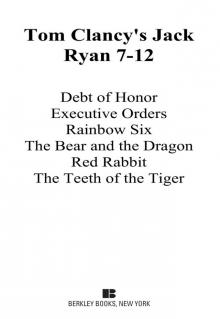 Jack Ryan Books 7-12
Jack Ryan Books 7-12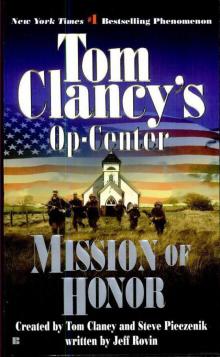 Mission of Honor o-9
Mission of Honor o-9 Private Lives nfe-9
Private Lives nfe-9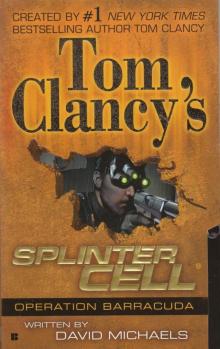 Operation Barracuda sc-2
Operation Barracuda sc-2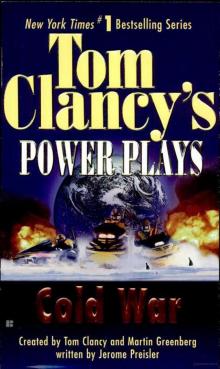 Cold War pp-5
Cold War pp-5 Point of Impact nf-5
Point of Impact nf-5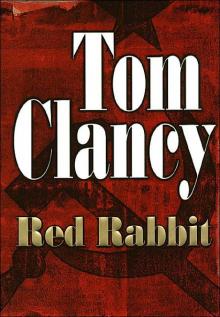 Red Rabbit jr-9
Red Rabbit jr-9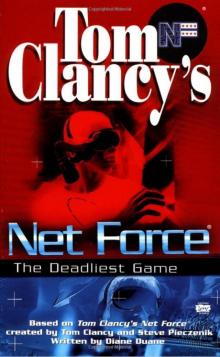 The Deadliest Game nfe-2
The Deadliest Game nfe-2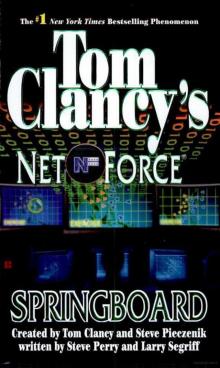 Springboard nf-9
Springboard nf-9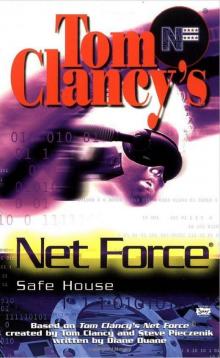 Safe House nfe-10
Safe House nfe-10 EndWar e-1
EndWar e-1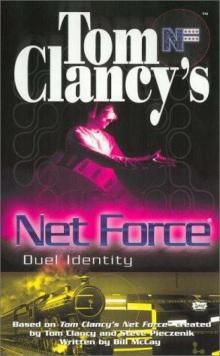 Duel Identity nfe-12
Duel Identity nfe-12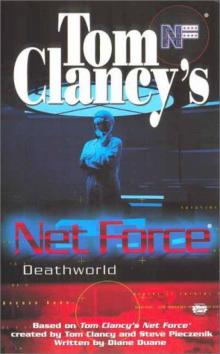 Deathworld nfe-13
Deathworld nfe-13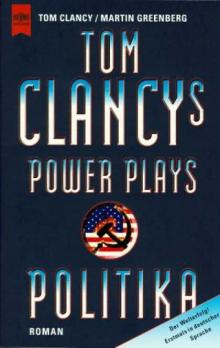 Politika pp-1
Politika pp-1 Rainbow Six jr-9
Rainbow Six jr-9 Tom Clancy's Power Plays 1 - 4
Tom Clancy's Power Plays 1 - 4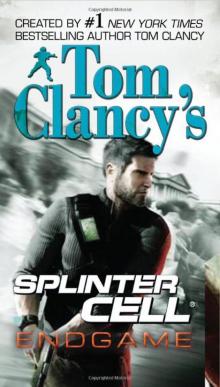 Endgame sc-6
Endgame sc-6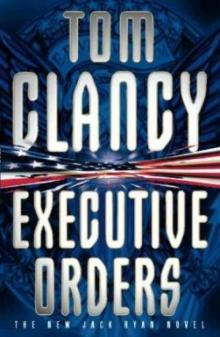 Executive Orders jr-7
Executive Orders jr-7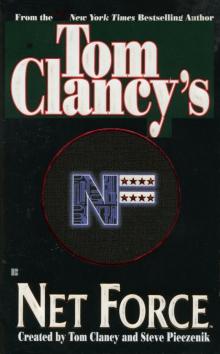 Net Force nf-1
Net Force nf-1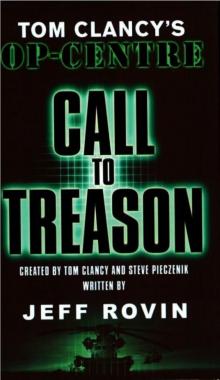 Call to Treason o-11
Call to Treason o-11 Locked On jrj-3
Locked On jrj-3 Against All Enemies
Against All Enemies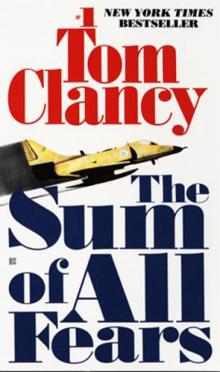 The Sum of All Fears jr-7
The Sum of All Fears jr-7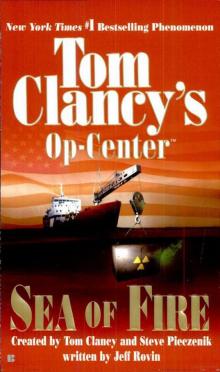 Sea of Fire o-10
Sea of Fire o-10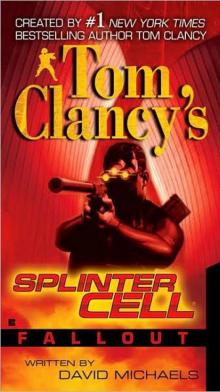 Fallout sc-4
Fallout sc-4 Balance of Power o-5
Balance of Power o-5 Shadow Watch pp-3
Shadow Watch pp-3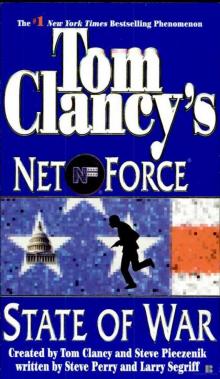 State of War nf-7
State of War nf-7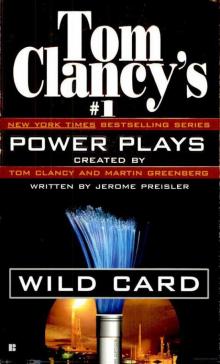 Wild Card pp-8
Wild Card pp-8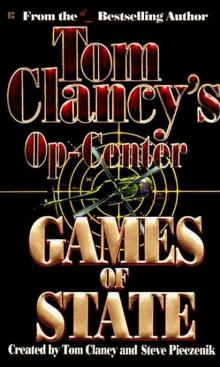 Games of State o-3
Games of State o-3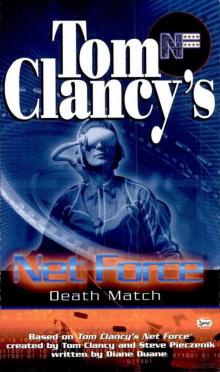 Death Match nfe-18
Death Match nfe-18 Against All Enemies mm-1
Against All Enemies mm-1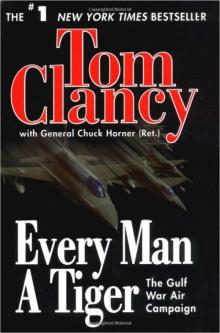 Every Man a Tiger: The Gulf War Air Campaign sic-2
Every Man a Tiger: The Gulf War Air Campaign sic-2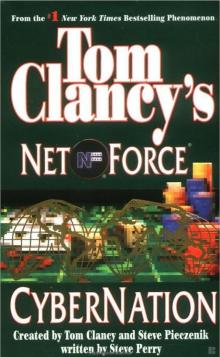 Cybernation nf-6
Cybernation nf-6 Support and Defend
Support and Defend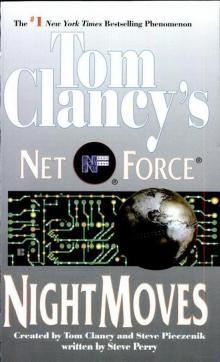 Night Moves nf-3
Night Moves nf-3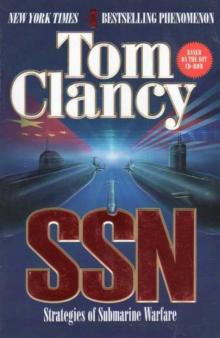 SSN
SSN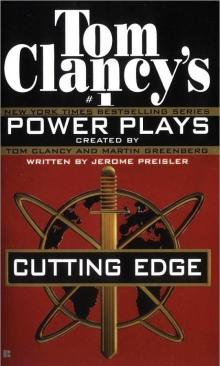 Cutting Edge pp-6
Cutting Edge pp-6 The Cardinal of the Kremlin jrao-5
The Cardinal of the Kremlin jrao-5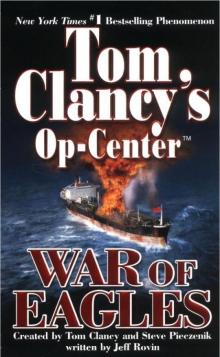 War of Eagles o-12
War of Eagles o-12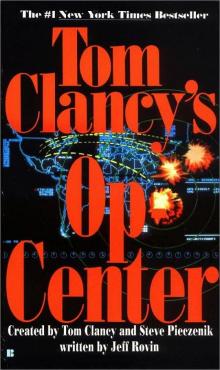 Op-Center o-1
Op-Center o-1 Mirror Image o-2
Mirror Image o-2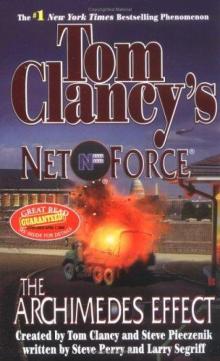 The Archimedes Effect nf-10
The Archimedes Effect nf-10 Teeth of the Tiger jrj-1
Teeth of the Tiger jrj-1 Bio-Strike pp-4
Bio-Strike pp-4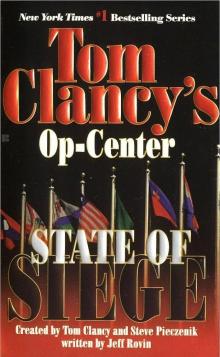 State of Siege o-6
State of Siege o-6 Debt of Honor jr-6
Debt of Honor jr-6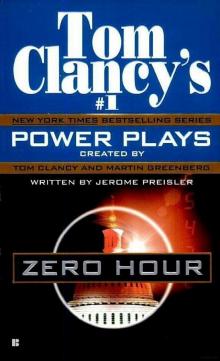 Zero Hour pp-7
Zero Hour pp-7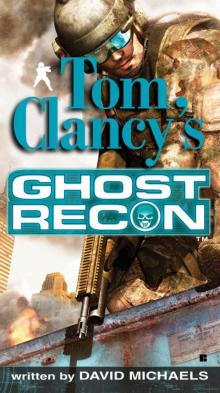 Ghost Recon gr-1
Ghost Recon gr-1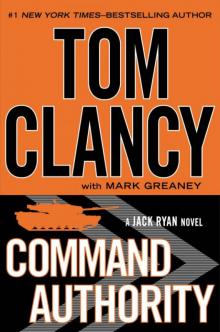 Command Authority jr-10
Command Authority jr-10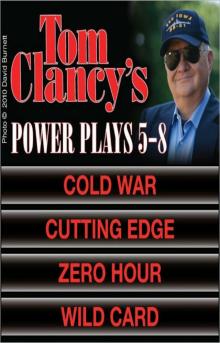 Tom Clancy's Power Plays 5 - 8
Tom Clancy's Power Plays 5 - 8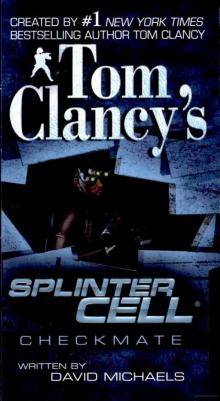 Checkmate sc-3
Checkmate sc-3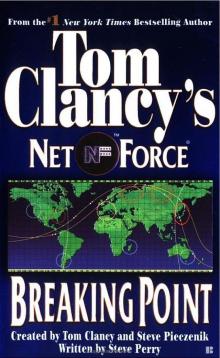 Breaking Point nf-4
Breaking Point nf-4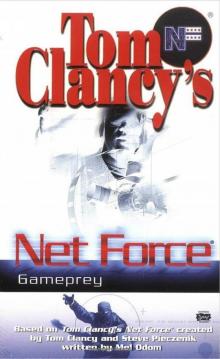 Gameprey nfe-11
Gameprey nfe-11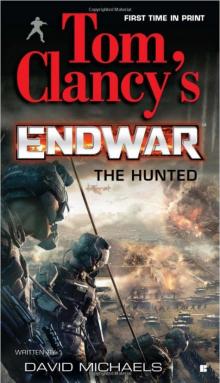 The Hunted e-2
The Hunted e-2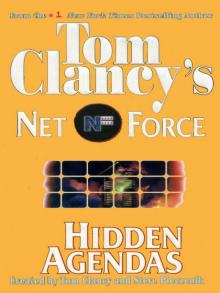 Hidden Agendas
Hidden Agendas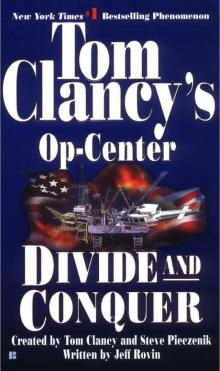 Divide and Conquer o-7
Divide and Conquer o-7